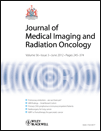
Journal of Medical Imaging and Radiation Oncology
Scope & Guideline
Transforming Oncology Through Cutting-Edge Imaging Research
Introduction
Aims and Scopes
- Medical Imaging Techniques:
The journal emphasizes advancements in various medical imaging modalities, including MRI, CT, PET, and ultrasound, highlighting their application in diagnosing and managing cancer. - Radiation Therapy Innovations:
Research on innovative radiation therapy techniques such as stereotactic radiotherapy, proton therapy, and brachytherapy is a key focus, aiming to improve treatment outcomes and minimize side effects. - Interventional Radiology Applications:
The journal covers studies related to interventional radiology, including techniques for biopsy, embolization, and other minimally invasive procedures, demonstrating their role in cancer management. - Clinical Outcomes and Quality Improvement:
There is a strong emphasis on clinical outcomes related to imaging and radiation therapies, including studies on quality assurance, patient-reported outcomes, and the effectiveness of treatment protocols. - Artificial Intelligence in Imaging and Radiation Oncology:
The integration of AI and machine learning in medical imaging and treatment planning is a growing area of interest, with research focusing on enhancing diagnostic accuracy and optimizing treatment strategies.
Trending and Emerging
- Integration of Artificial Intelligence:
The increasing focus on AI applications in imaging and radiation oncology is evident, with numerous studies exploring its potential to enhance diagnostic accuracy and treatment planning. - Patient-Centered Outcomes and Quality of Life:
There is a growing emphasis on research that addresses patient-reported outcomes and quality of life, indicating a shift towards more holistic approaches in cancer care. - Collaborative Multidisciplinary Approaches:
Research highlighting the collaboration between different specialties, such as oncology, radiology, and surgery, is on the rise, reflecting the importance of integrated treatment strategies. - Telemedicine and Remote Monitoring:
The emergence of telemedicine and remote monitoring in the context of imaging and radiation oncology is becoming a prominent topic, especially in light of the COVID-19 pandemic's impact on healthcare delivery. - Radiomics and Predictive Modeling:
Studies focusing on radiomics and the use of imaging biomarkers to predict treatment response and outcomes are trending, showcasing the potential for personalized medicine in oncology.
Declining or Waning
- Traditional Imaging Techniques:
There is a noticeable decline in publications focusing solely on traditional imaging techniques without the integration of advanced technologies or AI, suggesting a shift towards more innovative approaches. - General Radiology Topics:
Research that does not directly relate to oncology or radiation therapy, such as general radiology topics, appears to be waning, indicating a more specialized focus in recent publications. - Basic Science Research in Imaging:
Basic science studies related to imaging without direct clinical application or relevance to patient outcomes are becoming less prominent, as the journal prioritizes translational research.
Similar Journals
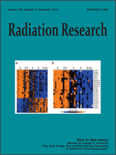
RADIATION RESEARCH
Pioneering research in biophysics and radiation technology.RADIATION RESEARCH is a prestigious journal published by the RADIATION RESEARCH SOC that serves as a vital resource for professionals and researchers in the fields of biophysics, radiation science, and radiology. Established in 1954, this journal has consistently advanced the study of radiation's effects on health and the environment, bridging fundamental and applied research. It boasts an impressive impact factor reflected in its quartile rankings, including Q2 in Biophysics and Q1 in Radiation, making it a highly regarded publication within its discipline. Researchers will find valuable insights through rigorous peer-reviewed articles that explore innovative methodologies and findings related to radiation exposure, imaging technologies, and the biological consequences of radiation. Although the journal does not currently offer open access, it remains a vital reference for academia and industry, fostering a deeper understanding of radiation sciences and their implications for future research and public health.

Physics & Imaging in Radiation Oncology
Empowering Collaboration in Physics and Imaging for Better Patient CarePhysics & Imaging in Radiation Oncology is a premier journal dedicated to advancing the interdisciplinary field of radiation oncology through innovative research and imaging technologies. Published by Elsevier, this open-access journal has made its mark since its inception in 2017, ensuring that groundbreaking findings are accessible to a broad audience. With a strong focus on the integration of physics, imaging techniques, and oncology, the journal occupies esteemed positions in the academic landscape, ranking in the top quartile for Radiation and Radiology, Nuclear Medicine and Imaging as of 2023. The journal serves as a platform for researchers, professionals, and students to share insights and foster collaboration, ultimately improving patient outcomes through enhanced imaging and treatment modalities. Based in Ireland and operating from Radarweg 29, 1043 NX Amsterdam, Netherlands, the journal aims to bridge the gap between theoretical physics and practical applications in clinical settings.
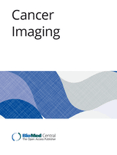
CANCER IMAGING
Transforming Cancer Research Through Cutting-Edge ImagingCANCER IMAGING, published by BMC, stands as a leading open-access journal in the realms of oncology and medical imaging, significantly contributing to the advancement of cancer research since its inception in 2000. With an impressive impact across multiple domains—most notably ranking Q1 in prestigious categories such as Medicine (miscellaneous), Oncology, and Radiology—this journal ensures high visibility and influence within the academic community. As of 2023, it is recognized in various Scopus rankings, securing top positions in the fields of Radiology, Nuclear Medicine, and Imaging, alongside Radiological and Ultrasound Technology. The journal's commitment to open-access publication, adopted in 2014, enhances accessibility for researchers, healthcare professionals, and students alike, fostering an inclusive environment for sharing critical advancements and innovative methodologies in cancer imaging. Set in the vibrant landscape of the United Kingdom, CANCER IMAGING continues to play a vital role in elucidating the complexities of cancer diagnostics and treatment, establishing itself as an essential resource for those pursuing excellence in cancer care and research.
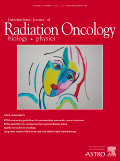
INTERNATIONAL JOURNAL OF RADIATION ONCOLOGY BIOLOGY PHYSICS
Pioneering Research in Cancer Treatment and Biology.International Journal of Radiation Oncology Biology Physics, published by Elsevier Science Inc, is a premier academic journal that has played a critical role in advancing the field of radiation oncology since its inception in 1975. With an impressive impact factor and recognition as a Q1 journal across multiple categories such as Cancer Research, Oncology, and Radiology, this journal serves as a vital resource for researchers, clinicians, and students dedicated to understanding and improving cancer treatment modalities. Its multifaceted scope encompasses original research, reviews, and innovative clinical studies, fostering a deeper understanding of the interplay between radiation, biology, and oncology. With a remarkable ranking in Scopus, including a top position in Radiation Physics and an elite percentile in Oncology, IJROBP remains at the forefront of scientific discovery and innovation in the management of cancer. A traditional subscription model ensures high-quality, peer-reviewed content, providing invaluable insights that continue to advance the standards of care and research in radiation oncology.
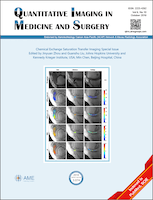
Quantitative Imaging in Medicine and Surgery
Innovative Insights in Quantitative Medical ImagingQuantitative Imaging in Medicine and Surgery is an esteemed journal dedicated to advancing the field of medical imaging through rigorous research and innovative methodologies. Published by AME PUBLISHING COMPANY in China, this journal has established itself with an impressive Q2 quartile ranking in the field of Radiology, Nuclear Medicine, and Imaging, reflecting its dedication to high-quality research. With a comprehensive focus on quantitative imaging techniques, the journal covers a wide range of topics including image analysis, imaging biomarkers, and the integration of imaging in clinical practice, promoting collaboration between imaging specialists and clinicians. As an open access journal, Quantitative Imaging in Medicine and Surgery ensures that its articles are freely accessible, facilitating the dissemination of knowledge to a broader audience. With a commitment to fostering innovation in imaging science, this journal serves as an invaluable resource for researchers, professionals, and students alike, ultimately aiming to improve patient outcomes through advanced imaging strategies and technologies.

Advances in Radiation Oncology
Driving Breakthroughs in Radiation TherapyAdvances in Radiation Oncology, published by Elsevier Inc, is a premier international journal dedicated to the field of oncology and radiology, focusing on the latest groundbreaking research and innovations in radiation therapy. Launched as an Open Access journal in 2016, it has since carved out a significant niche in the academic community, featuring contributions that span a diverse range of topics including clinical practices, technologies, and outcomes in radiation oncology. With an impressive Q2 rankingOncology and Radiology, Nuclear Medicine and Imaging categories for 2023, and positioned within the 65th and 55th percentiles of Scopus ranks, it serves as an essential resource for researchers, medical professionals, and students alike. The journal not only emphasizes the importance of disseminating knowledge widely through its open access model but also aims to foster collaboration and innovation in the evolving landscape of cancer treatment. For those looking to stay at the forefront of radiotherapy research and advancements, Advances in Radiation Oncology is an invaluable platform for scholarly communication.
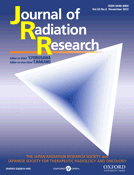
JOURNAL OF RADIATION RESEARCH
Bridging disciplines in the ever-evolving field of radiation research.JOURNAL OF RADIATION RESEARCH, published by Oxford University Press, is a prominent peer-reviewed journal focusing on the diverse fields of radiation science, including health, toxicology, and radiology. Since its inception in 1960, this open-access journal has provided a critical platform for the dissemination of high-quality research, making it accessible to a global audience of researchers, professionals, and students. With a consistent track record, the journal holds an impressive impact factor and is categorized in Q2 of Radiation studies and Q3 in Health and Toxicology as per the 2023 rankings, reflecting its influential role in shaping contemporary discourse in the field. The journal also boasts notable rankings within Scopus, further underscoring its importance in advancing knowledge and innovations related to radiation. Spanning from 1960 to 2024, the JOURNAL OF RADIATION RESEARCH remains at the forefront of scientific exploration and is essential reading for anyone committed to advancing the understanding of radiation and its effects.
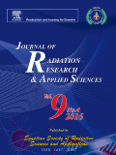
Journal of Radiation Research and Applied Sciences
Advancing knowledge in radiation science and its applications.Journal of Radiation Research and Applied Sciences, published by ELSEVIER, is a premier open-access journal since 2013, dedicated to advancing the understanding and application of radiation research in various fields. With an ISSN of 1687-8507, this journal serves as a vital resource for researchers, professionals, and students engaged in the study of the physical and biological effects of radiation, radiation physics, and its applications in medicine and industry. Its rigorous peer-review process ensures the dissemination of high-quality research that meets the growing demands for innovative solutions in radiation science. By offering comprehensive access options, the journal promotes an inclusive approach to sharing knowledge with the global community. The Journal of Radiation Research and Applied Sciences stands out as a key platform for scholarly communication, fostering advancements that impact both theory and practice in the rapidly evolving landscape of radiation research.
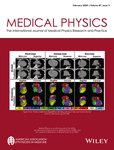
MEDICAL PHYSICS
Exploring Innovations in Medical Imaging and TreatmentMEDICAL PHYSICS, published by WILEY, stands as a leading journal in the fields of biophysics, medicine, and radiology, boasting an impressive impact factor and classified within the prestigious Q1 category across multiple relevant domains. With its ISSN 0094-2405 and E-ISSN 2473-4209, the journal has been a vital resource since its inception in 1974, leading the discourse well into 2024. Hailing from the United States, MEDICAL PHYSICS serves a diverse academic audience, comprising researchers, clinicians, and students eager to engage with the latest advancements and methodologies. The journal’s authoritative presence is underscored by its Scopus rankings, placing it among the top percentile in both Medicine and Biophysics, marking it as an essential scholarly platform for innovative research and critical reviews. While not currently an Open Access journal, its commitment to curating high-quality articles ensures that readers can access groundbreaking insights into medical imaging, treatment protocols, and the theoretical underpinnings of medical physics. Explore the intersection of technology and healthcare through the esteemed pages of MEDICAL PHYSICS.

Japanese Journal of Radiology
Transforming Radiological Science with Cutting-Edge ResearchThe Japanese Journal of Radiology, published by SPRINGER, serves as a premier platform for disseminating cutting-edge research and clinical advancements in the fields of radiology, nuclear medicine, and imaging. With an ISSN of 1867-1071 and E-ISSN 1867-108X, this journal has established itself as a vital resource for practitioners, researchers, and students alike. Renowned for its high-quality peer-reviewed articles, it currently enjoys a respectable impact factor within the Q2 category of Scopus rankings, placing it in the 69th percentile among 333 journals in its field. The journal has seen consistent convergence of research from 2009 to 2024, further underscoring its commitment to advancing the understanding of radiological practices. Importantly, the journal offers Open Access options to facilitate widespread dissemination of knowledge, ensuring that vital research reaches its audience without barriers. Addressed in Japan, the Japanese Journal of Radiology plays a critical role in enhancing the global discourse on medical imaging, making it an essential resource for anyone engaged in this dynamic field.